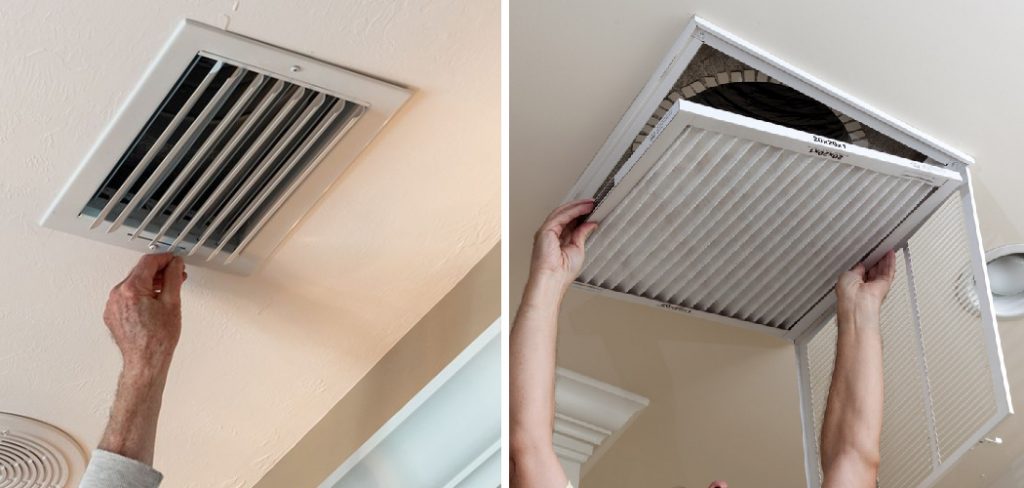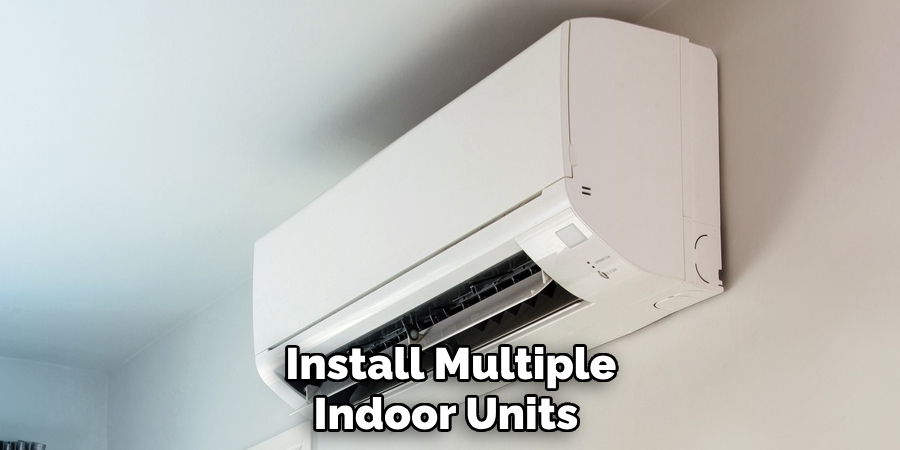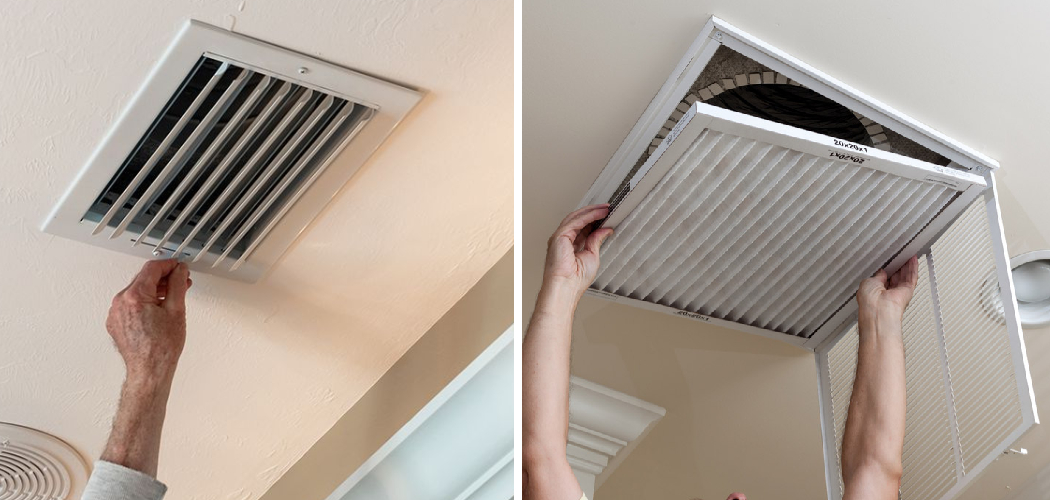If you’re looking for ways to cool down the second floor of your home, you have come to the right place. With temperatures continuing to rise each summer, it’s important that your AC system runs properly and keeps every level of your house temperature-regulated. But what if your air conditioning system only works on certain levels? Installing an additional A/C unit can be a costly solution–but don’t give up yet!

In this blog post, we’ll show you how to get air conditioning to second floor without breaking your budget. From DIY tips and tricks to a cost-effective option, we’ll provide options suitable for any household or lifestyle needs. Read on for more information!
9 Best Ways on How to Get Air Conditioning to Second Floor
1. Use a Window-mounted Air Conditioner:
A great way to add cooling power to your second floor is to use a window-mounted air conditioning unit. These units are typically lightweight and easy to install, plus they come in various sizes so you can find one that best fits the size of space you are trying to cool down. This is ideal for those who have limited outdoor space or are short on budget.
2. Install a Ductless Mini-Split System:
For more serious cooling needs, you may want to consider installing a ductless mini-split system. This type of setup is perfect for rooms that are away from the main air conditioning unit and need extra cooling action. The mini-split system consists of an outdoor unit and one or more indoor units that are connected to refrigerant lines. While this is a more expensive solution than a window air conditioner, it offers greater cooling power and energy efficiency.
3. Invest in Ventilation Fans:
Ventilation fans can also be used to circulate cool air throughout your home, even if you don’t have a full air conditioning system. Investing in powerful fans that can be pointed directly at your second-floor rooms will help circulate cool air and keep temperatures low. In addition, they can also remove hot or stale air from the house to create an overall more comfortable atmosphere.
4. Use Portable Air Conditioners:
to cool down those hard-to-reach spots, portable air conditioners can be a great option. They come in small sizes and don’t require any type of installation, so you can easily move them around as needed to cool different areas of the home. This is especially helpful if you’re looking for an energy-efficient way to get the air conditioning to second-floor rooms without spending too much money.

5. Install Smart Ceiling Fans:
Smart ceiling fans are an increasingly popular way to keep air circulating throughout your home. They come in a variety of styles and colors, plus they can be controlled remotely or with voice commands for added convenience. Not only do these fans cool down the space but they also help conserve energy by running on low speed and using less energy overall.
6. Add Insulation to Your Attic:
Adding insulation to your attic is another great way to keep the heat from entering your upper levels. Not only will it help reduce your cooling bills but it can also be beneficial in preventing heat loss during the winter months as well. Make sure you’re using proper insulation materials and consult a professional to help with the installation if necessary.
7. Install a Heat Pump:
If you’re looking for a more permanent solution, then installing a heat pump might be the way to go. This type of system can provide both heating and cooling capabilities, making it ideal for those who want year-round comfort in their home. It’s important to note that this can be a more expensive option, so make sure you research and compare different models before making your decision.

8. Utilize Existing Vents:
If you already have air conditioning installed in your home, one of the best ways to get the air to the second floor is by utilizing the existing vents. Make sure to check your HVAC system and look for any blocked or clogged ducts that could be preventing air from circulating properly. If you’re not sure how to do this, it’s best to consult a professional who can help you diagnose the issue and make any necessary repairs or adjustments.
9. Consider Investing in a Zoned System:
Finally, you can consider investing in a zoned system. This type of setup allows you to control the temperature in specific areas or rooms of your home. It’s great for those who want to adjust the temperatures according to their lifestyle needs or even save money by only cooling certain areas when they need it. Just keep in mind that this can be a more expensive option, so make sure to do your research and compare different models before making your decision.
No matter which solution you choose, getting air conditioning to the second floor doesn’t have to be difficult or expensive. With the right plan of action and some thoughtful considerations, you can easily stay cool this summer without breaking the bank. Good luck!
Additional Tips and Tricks to Get Air Conditioning to Second Floor
1. Utilize a blower fan to circulate the cooled air from your first-floor unit. Place the fan in a doorway or window and angle it so that it can provide a cross-breeze on both floors of your home.
2. Consider installing a split system air conditioning unit on your second floor. These are relatively easy to install and require only one outdoor unit that is connected to two or more indoor units. This will allow you to take advantage of the cooling benefits while keeping costs down.
3. Have insulation installed on both floors of your home, as this will help keep the cooled air from escaping and will also reduce overall energy costs.
4. Utilize window treatments such as blinds and curtains to block out the heat during the day. This will also help to keep the air cool and reduce energy costs.
5. Consider adding ceiling fans in rooms that are often too warm, as they can help circulate the cooled air and make a room more comfortable.
6. Look into installing an energy-efficient window unit on your second floor, as this is quieter than a traditional air conditioning unit and will cost less to run.
7. If you have a large house, consider investing in a ductless mini-split system, as this will allow you to install multiple indoor units that can be operated independently from each other.
8. Make sure that all your windows are properly sealed and insulated to keep the cool air inside and the hot air out.
9. Utilize natural ventilation by opening windows and doors when the air outside is cooler than inside your house. This can be an especially effective strategy on lower floors, as the cool air from outside will flow up into the house.
10. Plant trees and shrubs around your home to help provide shade and protection from the heat of the sun. This can help keep your home cooler and reduce energy costs.

Following these tips and tricks will help you get air conditioning to your second floor and make your home more comfortable. With the right setup, you can enjoy cool air on both levels of your house. Just remember to keep an eye on energy costs, as running multiple air conditioners at once can quickly add up!
Frequently Asked Questions
What if I Don’t Have Ductwork?
If you do not have existing ductwork, then you will likely need to install a mini-split air conditioner or a window unit in each room that you want to cool. Mini-split air conditioners are becoming increasingly popular due to their energy efficiency and the fact that they are designed to provide cooling and heating for individual rooms.
Window units are also an option, but they will be much less energy efficient than a mini-split system and may not offer the same level of control or comfort.
Will My Home Need Renovations?
In many cases, no renovations to your home will be required when installing a new air conditioning system. However, if you do not have existing ductwork or are installing a mini-split air conditioner, some modifications may be necessary.
This could include creating new openings in walls to route the refrigerant lines and power cables from the outdoor unit to the indoor units. Additionally, depending on the size of your home and the type of air conditioning system you are installing, you may need to make sure the home’s electrical system can handle the additional load.
What If I Have an Older Home?
If you have an older home, some modifications may be necessary in order to install a new air conditioning system. This could include upgrades to the wiring and circuits, as well as ensuring your walls and ceilings are properly insulated. Additionally, if a ductless mini-split system is being installed, you will have to create new openings in walls and ceilings to route the lines from the outdoor unit into the various rooms that require cooling.

It is important to consult with an experienced HVAC professional before making any major modifications or upgrades in order to ensure your air conditioning system operates safely and efficiently.
Conclusion
Now you know how to get air conditioning to second floor. If you are installing a traditional forced-air system, you will need ductwork installed in order to distribute the cold air throughout your living space. If you do not have existing ductwork, then mini-split or window units can provide cooling for individual rooms with fewer modifications needed.
In either case, it is important to consult with an experienced HVAC professional to ensure that your air conditioning system is installed safely and efficiently. With the right system, you can enjoy a cool and comfortable home all year round!
